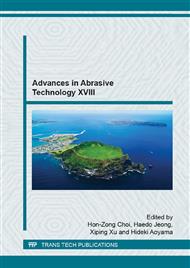p.173
p.178
p.184
p.190
p.196
p.203
p.209
p.215
p.221
Experimental Study on Surface Quality in Micro-Milling of Single Crystal Superalloy
Abstract:
Single crystal Ni3Al-based superalloy has excellent comprehensive performance.To study the micro-milling surface quality of Ni3Al-based superalloy, this article used two-edged carbide alloy micro-milling tool with 0.8mm diameter, then orthogonal experiment of three factors and five levels was implemented to the micro-milling of typical single crystal Ni3Al-based superalloy IC10. The primary and secondary factors of the impact on the micro-milling surface quality were found from spindle speed, feed rate, milling depth by range analysis, and the ideal cutting process parameters combination was optimized and obtained, then its cutting mechanism and the reason of affecting the surface quality were analyzed. The experiment result has certain guiding significance to the micro-milling mechanism of single crystal superalloy.
Info:
Periodical:
Pages:
196-202
Citation:
Online since:
January 2016
Authors:
Keywords:
Price:
Сopyright:
© 2016 Trans Tech Publications Ltd. All Rights Reserved
Share:
Citation:


